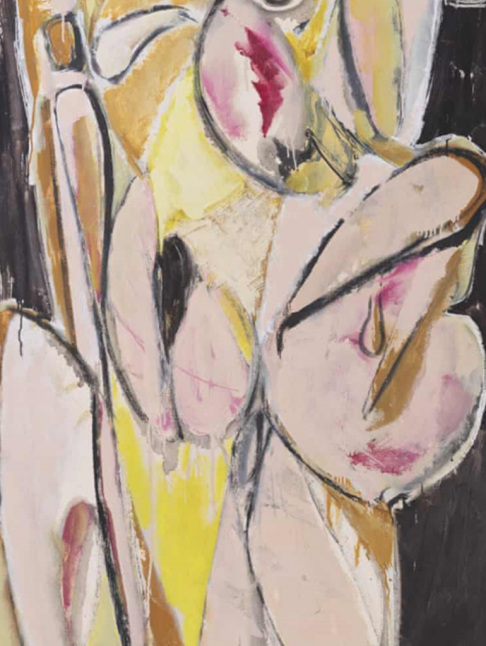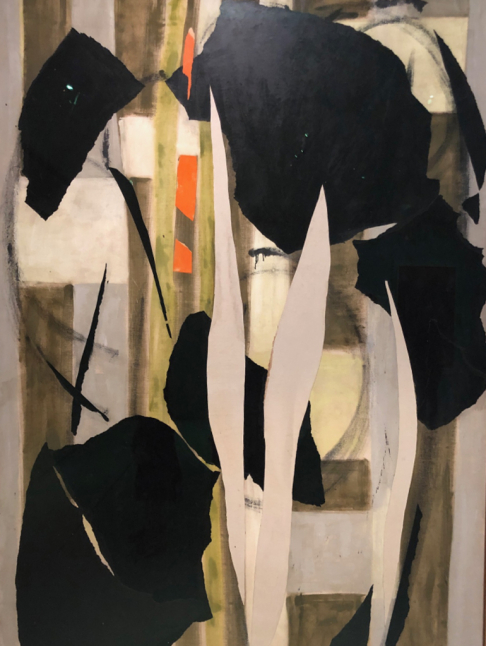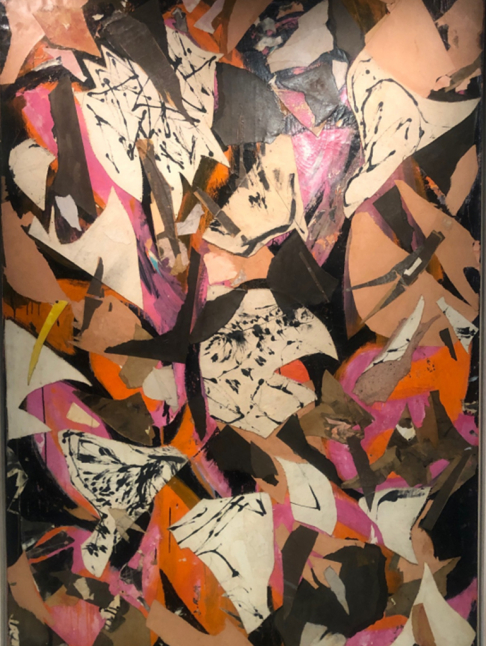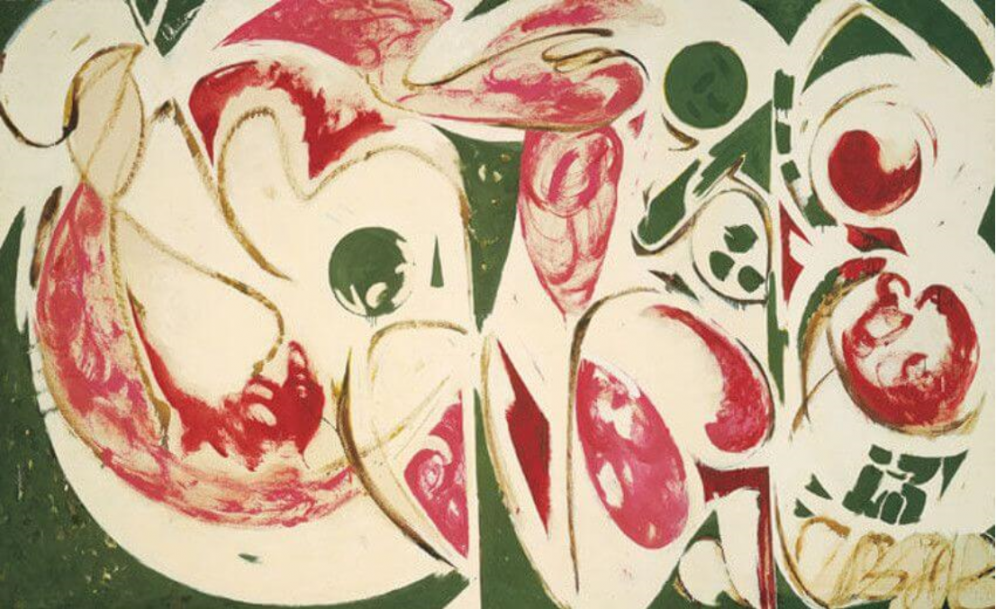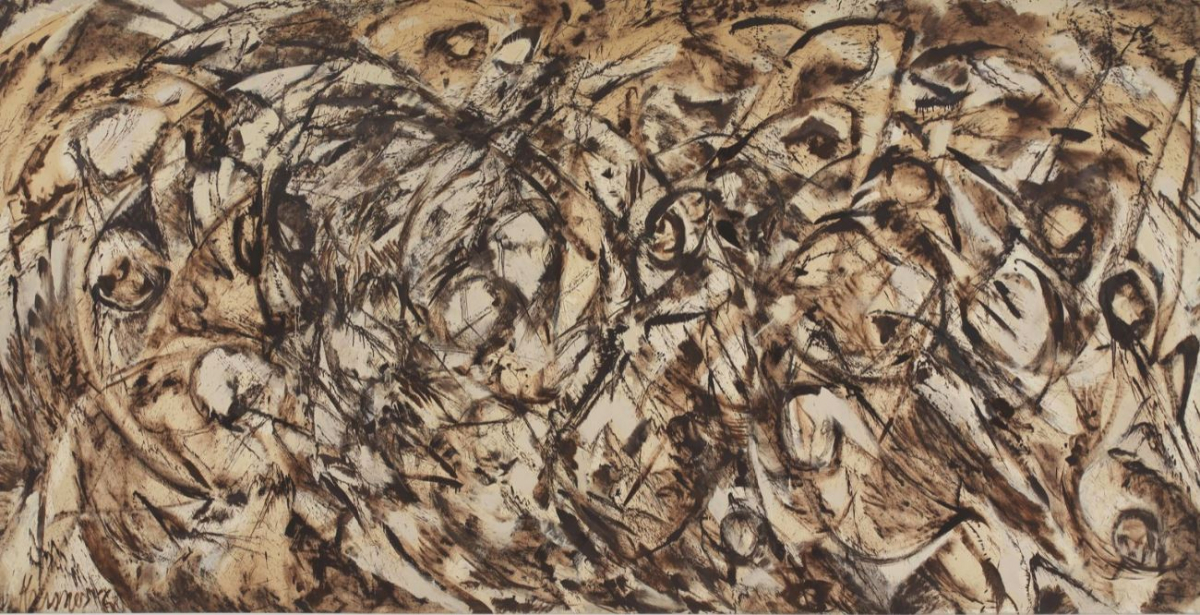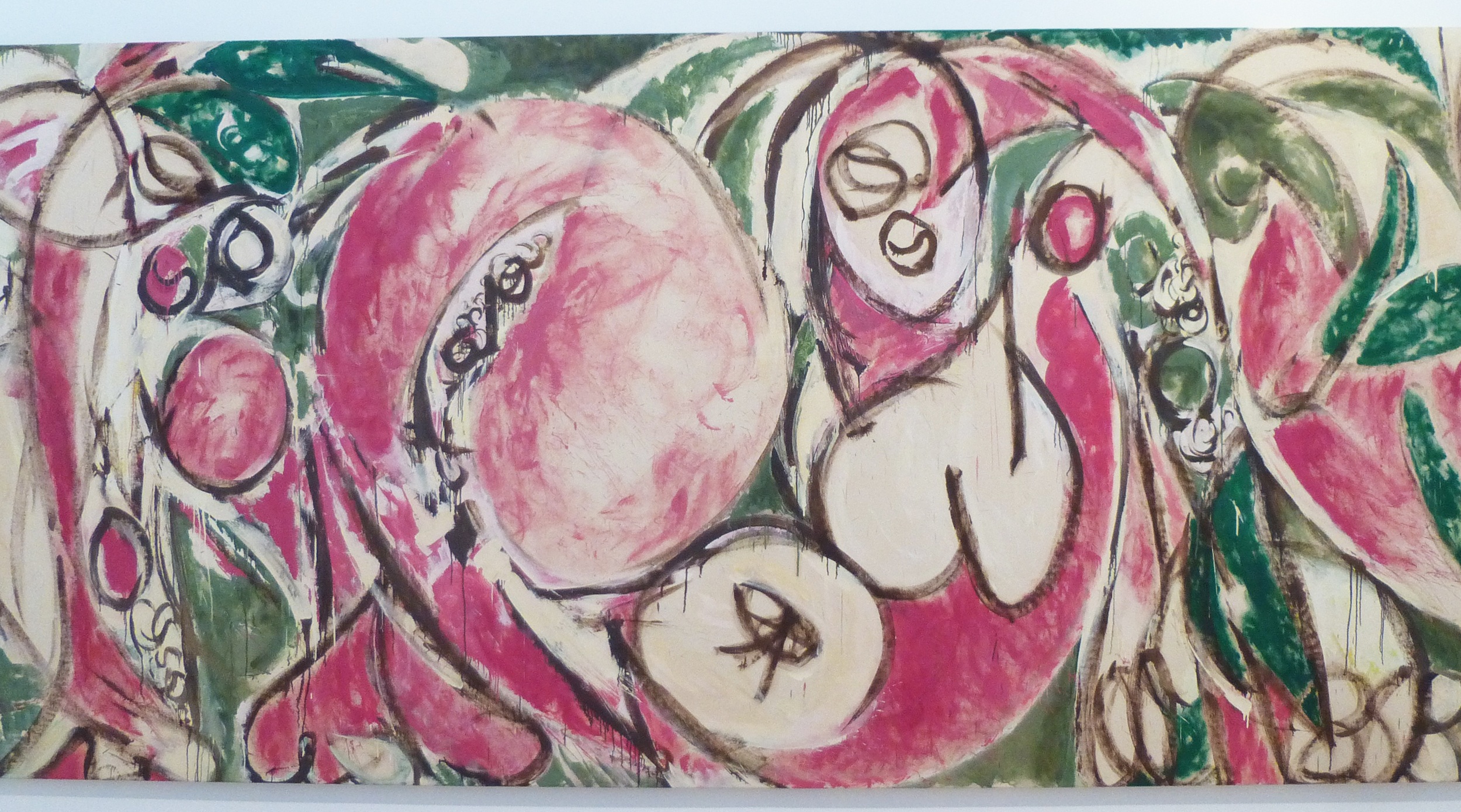
Out & About: Lee Krasner – Living Colour at The Barbican Gallery
Pure emotion oozes from the first retrospective of Lee Krasner’s work at the Barbican Art Gallery. The show finally pulls her out from under the shadows of her husband, Jackson Pollock. Her work is thrilling and ever evolving. As you move through the exhibition, you live through the transitions of Krasner’s life from depression, through ‘The Prophecy’ years to the colourful impressions of her later years.
Lee Krasner was born in Brooklyn in 1908, a time when female artists were not taken seriously. She had to fight every step of the way to pursue her dream of becoming a painter. By 1935, Krasner earned a coveted position as a mural painter with the Works Progressive Administration.
During her time at the WPA, Krasner’s work evolved. She refused to be limited by one aesthetic approach, believing that having a signature image was ‘rigid rather than being alive’. Multiple times over her career, Krasner completely re-directed her approach to painting. She initially enrolled in classes with German painter Hans Hofmann in 1937. With his guidance, Krasner began to explore the concepts of Cubism, Fauvism, collage and many other early modernist tendencies.
In 1941, Krasner met Jackson Pollock who gave her the confidence to start signing her work. There is no doubt that Pollock was a huge inspiration and their love and loss is so evident throughout her work. Sadly in 1956, Pollock died in a car crash killing himself and his mistress.
For six years following the death of her husband, Krasner made large scale paintings reflecting the cycles of life. These works are guided by grief and recovery. The first of this series, Earth Green, featured natural colour palettes of greens, red whites and tans. The next series, Night Journeys, contained darker, more brooding imagery.
Krasner suffered an aneurism and as we jump to 1971, her work again takes a huge leap into stark frontal shapes, flatly painted and returning to Matisse style cut outs and earlier deconstruction of her own work. These are the last things in the show, but rather than an ending, it feels like a return to something lost and re-found.
‘Lee Krasner: Living Colour’ is now on show at The Barbican in London until September 1, barbican.org.uk


